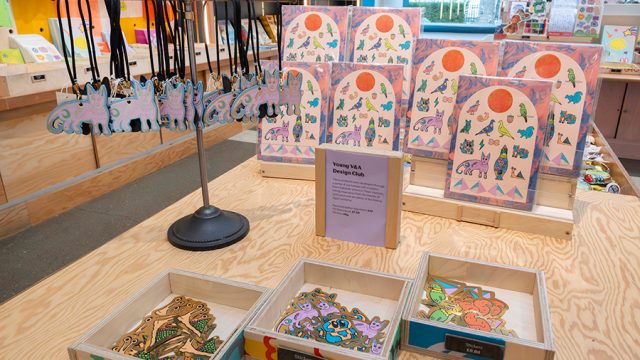Guest post by Joanna Weddell, who was recently awarded her doctorate on ‘Disseminating Design’, the post-war regional impact of the V&A Circulation Department, funded by the AHRC as a collaboration between the Victoria and Albert Museum and the University of Brighton.
Lucienne Day’s Calyx is on display in Blackburn Museum’s Cotton Town Gallery until the end of June 2018 as part of the DesignLab Nation programme with secondary school design students; however, this textile is not on its first journey from South Kensington.
This length of fabric was acquired by the V&A Circulation Department (Circ) in 1954 (CIRC.190-1954) as part of the collaboration between Circ and Manchester’s Cotton Board on English Chintz: Two Centuries of Changing Taste, displayed in 1955 at the Colour Design and Style Centre, Manchester. The reduced touring version, Two Centuries of English Chintz, comprised 150 fabrics displayed on specially designed units together with original designs and printing blocks to demonstrate techniques and processes. [1]
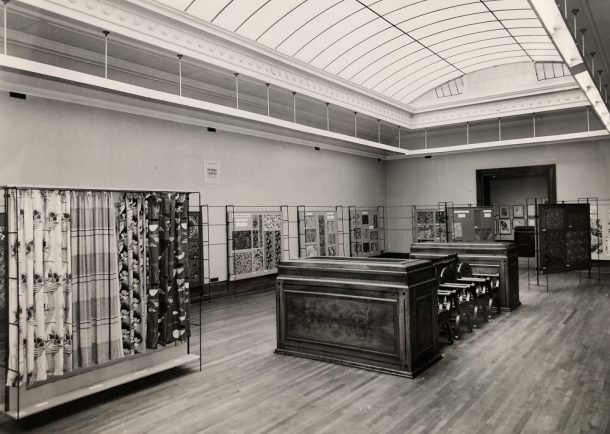
A V&A Archive photograph from July 1956 records the show at the Ferens Art Gallery, Hull, with metal display stands and historic textiles mounted on panels. The freestanding displays of loose lengths of contemporary fabrics, including Calyx, were available for handling with labels at the base of the unit. Just two fabric designs were shown from the period 1945-1951, Graham Sutherland’s Sutherland Rose, and Calyx. As Keeper of Circulation Peter Floud explained in the catalogue:
During the war, for obvious reasons, any striking developments in textile design were out of the question. Since the war there has been a growing extension of the practice of commissioning designs from well-known painters and sculptors. The Graham Sutherland rose has been chosen as a single representative of this trend. The Festival of Britain in 1951 saw the beginning of a powerful movement away from the traditional and in favour of abstract designs, which is still very much alive. Lucienne Day’s “Calyx” has been chosen as the design which did more than any other to gain widespread acceptance of this style. [2]
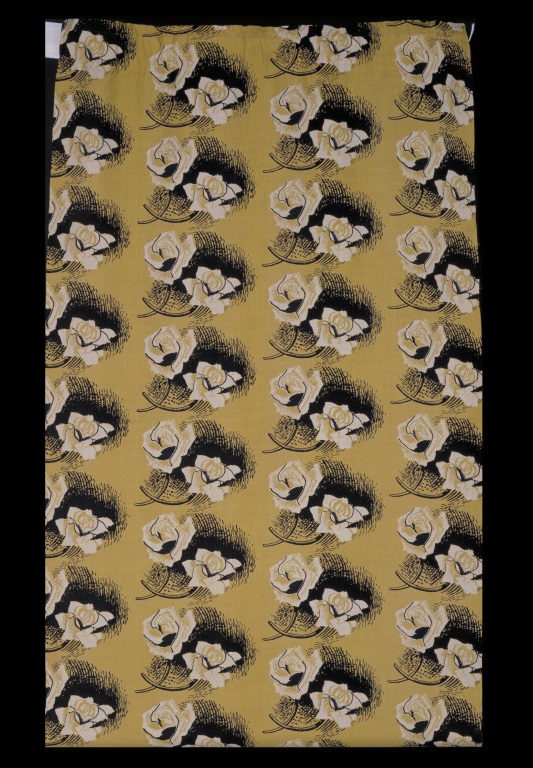
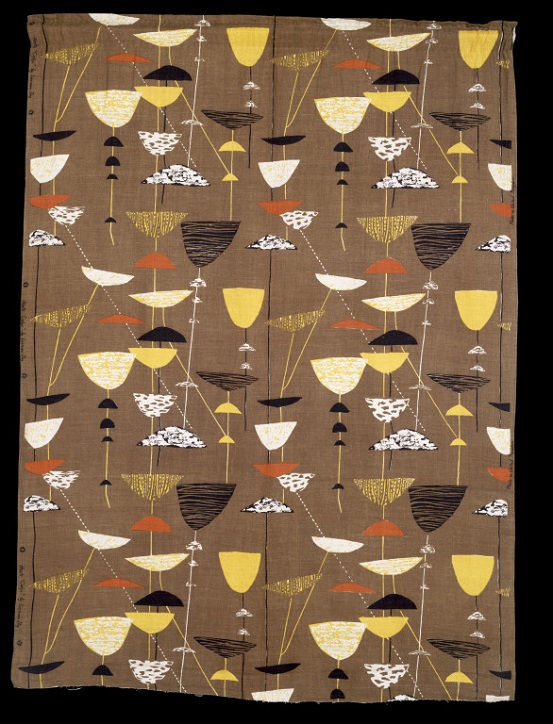
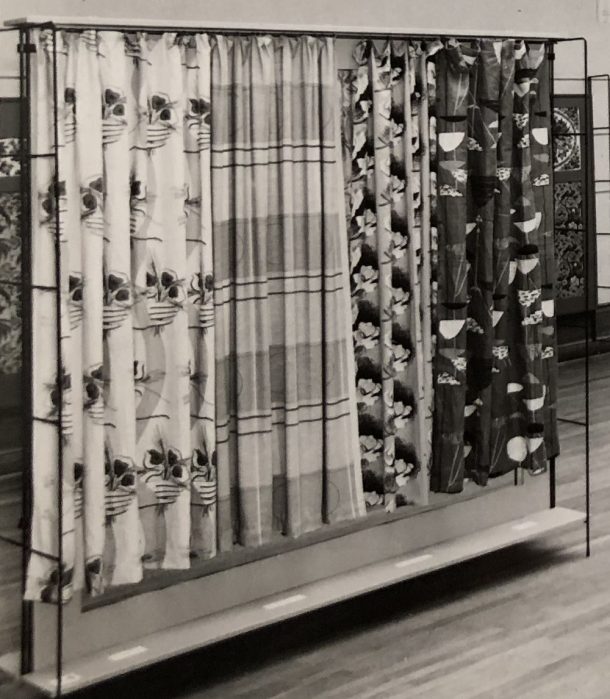
At this period screen printing not only ‘greatly extended the designer’s range, but, by very much reducing the initial overhead costs, it has made it possible for progressive manufacturers to experiment with unusual designs whose success would have been too uncertain to justify the expense of roller-engraving’. [3] Day’s Calyx was an ‘unusual’ design, being composed from painted collage elements influenced by the fine art practice of Klee and Miró. The original collage design was also acquired by Circ (CIRC.285-1955) and is available to view in the Prints & Drawings Study Room. At Blackburn Museum, the Calyx textile panel continues its journey to inspire the next generation of young designers as part of the DesignLab Nation programme.
[1] The Victoria & Albert Museum Circulation Department: Exhibitions 1955: Exhibitions for Loan to Museums, Art Galleries and Libraries (London: HMSO, 1954).
[2] Peter Floud, English Chintz: Two Centuries of Changing Taste (London: HMSO, 1955), p. 56. Catalogue for the exhibition assembled by the V&A Circulation Department at the Cotton Board’s Colour, Design and Style Centre, Manchester.
[3] Peter Floud, English Chintz (London: HMSO, 1955), p. 2; Small Picture Book No. 22.
